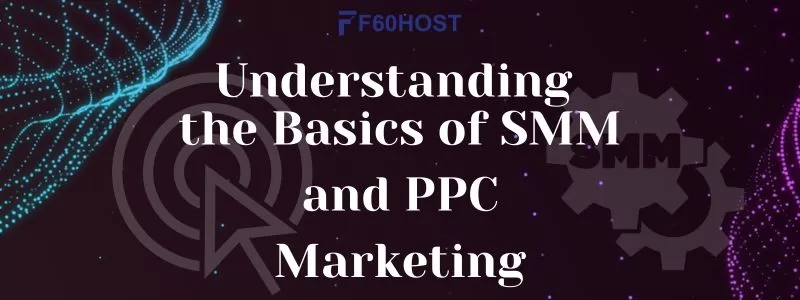A Short guide to Anchor Texts: Stuff you need to know
If you’ve been practicing SEO for a while, you’ve probably come across the term ‘Anchor Texts’. However, if you’ve just become aware of this term by clicking on this blog, then don’t worry. In this blog, we will dig into the meaning, the types, and most importantly, why you should know about the significance of Anchor Texts.
Anchor Text: A short description
Anchor Text is the text in the line or paragraph of a web page, which is highlighted blue. Most likely to be a phrase, it reveals an underline beneath it when you place your cursor over it.
An anchor text consists of two primary elements: the phrase itself, and the target link. The phrase and the link are related, the only difference between them being readability. In places where an anchor text is commonly used, i.e. blogs or webpages, plainly putting the naked link would seem odd and irregular. The reader might even assume that the writer of the content acted lazily. This is where anchor text comes into action.
Using anchor text seems more natural. It not only appears more understandable, but also seems neat. Using a naked url isn’t bad either and it has its uses, but we’ll see more on that later. Relevant anchor text is used by both search engines and readers to determine the topic of a linked page.
Still wondering why anchor text is important? We’ll get to that soon. But before that, let’s look at the types of anchor text and the best methods to implement anchor text into your content to make it SEO-ready.
Types of Anchor Texts and how they function:
The types of anchor texts commonly used are:
- Exact-match – The anchor text contains the exact keyword or phrase that we intend to rank it for. Anchor texts is considered ‘exact match’ if it contains a keyword that matches the page to which it is linked.. For example: ‘SEO Audit’ linking to a page about SEO Auditing.
- Partial-match – The anchor text is more or less related to the link it holds. This means that the target keyword is included partially or completely in the linked text, along with some other words to provide more context to the reader. If you choose, you can further experiment with this by adding other phrases, but make sure your main keyword is located within it.
- Branded – A brand is a business and marketing concept that allows people to identify a specific company, product, or individual. So, a branded anchor text is used to highlight the name of a company or an industry. Branded anchor text does not provide any further context about a brand’s services. Rather it only shows the central brand on its own. This works especially well if you’re citing a source or linking directly to a website.
- Brand + Keyword – This type of anchor text is used if you need to mention a brand (whether it be your own or another) and pair it with another keyword you are targeting.
- Related Keywords – This type of anchor texts does not include the actual keyword itself. Rather, it only includes those keywords which have some relation to the keyword you are targeting. This type of anchor text is useful to target other related keywords, if you’ve already used your target keyword several times.
- Naked Link/Naked URL- A naked link, also known as naked url, is a method where only the target link itself is given. In this technique, the phrase which makes up the other half of an anchor text is absent. It is recommended to use this method only at the bottom of your articles/posts as a reference.
- Generic – A generic anchor text is used to refer to a webpage, without the use of a particular keyword. This type of anchor text does not have a phrase which is related to the target link. Instead, it is a vague term used to attract the attention of the reader. Generic anchor text requires context, usually present in the article or post above it, to provide information to the reader about where the target link will direct them. Some generic anchor text terms are ‘click here’, ‘go here’, ‘view more’, ‘more info’, etc.
- Image Link – An image anchor text works differently than the anchor texts mentioned above. Here, the image’s ‘alt text’ functions as its anchor text. An alt text is the description of an image, usually detailing how the image looks. Much like standard anchor texts, the alt text of an image should be relevant. Avoid using longer keywords when writing the alt text of your image. However, the alt text of an image should be longer than your traditional anchor text. This is because it needs to contain what’s in the image, and sometimes, even why the image is included on your webpage in the first place.
Related Blogs –
What is Schema Markup: Its importance in SEO
Link Building for SEO: Definitive Guide
What Is a Guest Post? Everything You Need to Know
How To Get On The First Page Of Google
How to add Anchor Texts:
Adding anchor text is relatively simple and straightforward, especially if you use a CMS (Content Management System) like WordPress. Here’s how you can do it in 4 easy steps –
- Create a new post and write your content. You can even go to the content in which you wish to add the anchor text.
- Highlight the phrase you want to. Be sure to include the keyword you are targeting.
- Copy the link you wish to add.
- Click on the link icon, located in the formatting bar, and paste your link.
Should you create links using specific anchors?
To answer the above question simply, yes and no. Both users and search engine crawlers are affected by anchor text. However, several spammers target a specific keyword, leading to more false content on the internet. Google now implements strict action if it finds a website guilty of spamming. Sometimes, you may even use a specific anchor text too many times without the intent of spamming (this is called ‘over-optimizing’). The best way to avoid a penalty by Google is to use those keywords which are the most descriptive and by using a mix of the types of anchor texts we saw above.
Conclusion:
Anchor texts can be of great value to you and your website if utilized properly. In SEO, anchor text matters greatly as it tells Google what a page is about in a short, definitive sentence. Several Google patents mention using anchor text as a ranking signal. Using generic anchor texts such as ‘click here’ , ‘go here’ etc. more thoroughly throughout your content is generally considered to be a ‘poor SEO practice’. Using anchor texts with other SEO practices will help your page get the popularity it needs.
Now that you know all about anchor texts, go on and create your own!
For more blogs on similar topics, be sure to stay tuned to F60 Host.




